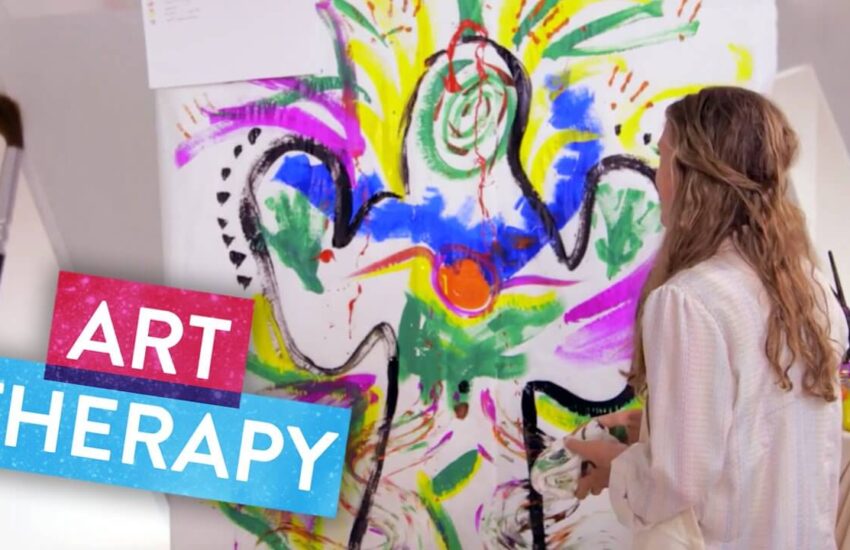Art Therapy is a mental health profession where individuals focus on expressing themselves; this process can yield various benefits. This article provides an overview of the seven key benefits of practicing art therapy, from improved Mood to increased confidence.
1. Improves Mood
Art therapy is a form of expressive therapy used to help clients express their thoughts and feelings. The end goal of art therapy is to assist the client in accessing their resources and developing personal skills and self-understanding. According to the American Art Therapy Association (AATA), art therapy is a form of psychotherapy that uses the creative process of art-making to improve mental health and well-being through self-disclosure, self-expression, and self-awareness.
2. Stimulates Creativity
The creative process used in art therapy helps a client explore feelings by expressing them in a nonverbal way and painting them directly on their artist’s canvas. The results are usually original, symbolic, and personally meaningful creations.
3. Provides New Perspectives
Art therapy helps individuals see themselves and the world differently by encouraging new ideas, solutions, and insights. Art therapy is a process of self-exploration rather than problem-solving, and it is an effective way to help clients gain more understanding of themselves and their problems. In addition to mood improvement, this process allows clients to develop problem-solving skills they can use in other areas of their lives.
4. Increases Confidence
The creative process used in art therapy is an expressive way to boost confidence. Self-confidence is one of the most critical factors affecting one’s behavior and success. Art therapy helps people brainstorm ideas, perspectives, and solutions by letting them tangibly express their feelings and thoughts.
5. Helps Identify Problem Areas
Art therapy helps clients articulate how their problems make them feel, their needs, and how they want to solve the problem. The creative process used in art therapy can be a new and innovative way to experience the world, problem solving, and self-exploration. Also, it can help clients identify and tackle their problem areas.
6. Helps Individuals Develop Self-Esteem
Art therapy provides individuals with the tools to express themselves authentically through art. This process gives them a sense of who they are and what they want in life, allowing them to gain solutions for their problems and self-confidence. Also, it helps boost their self-esteem and helps them embrace their differences.
7. Encourages Self-Awareness and Self-Empowerment
The creative process used in art therapy encourages the individual to become self-aware. Also, the individual learns self-empowering skills that help them adjust to their environment, solve problems, raise their awareness of issues that may affect them, and gain insight into their strengths and weaknesses while developing personal resilience.
Who can Art Therapy Help
In addition to the seven key benefits of practicing art therapy, there are many ways that art therapy can be used to help clients. Art therapy can be used in various settings, from mental health centers to schools and child care facilities. Clients may come in for several sessions or weekly work in the treatment room. They may come for individual sessions or classes.
In school settings, art therapists can help with identifying learning disabilities, dyslexia, and other difficulties that students have. Art therapy can be used in schools to help students improve social skills, self-expression, and work with others. In addition, art therapists can work with teachers to improve overall school environments, such as classroom design and curriculum.
Art therapy is a very effective way to help children with Autism Spectrum Disorder (ASD) learn how to communicate with others. Art therapy has also been helpful for children who have language-based disorders such as articulation disorders and non-verbal learning disabilities. Art therapy is very effective in helping children with ASD improve their social skills, including regulating emotions, expressing feelings, and dealing with frustration.
Conclusion
Art therapy can also be used with children who have autism at home. Art therapists can help parents create a home environment that promotes communication and provides the child with the opportunity for creative expression. They can also help parents to identify behavioral problems such as phobias and compulsions, which are often associated with autism.
Art therapists are trained to help people improve their mental, physical, emotional, and spiritual well-being through the creative process of art making. Art therapists use a wide range of art media, including paint, clay, collage, sculpture, and photography, to help clients express themselves. Art therapy is frequently used in psychiatric settings with children and adults of all ages.
